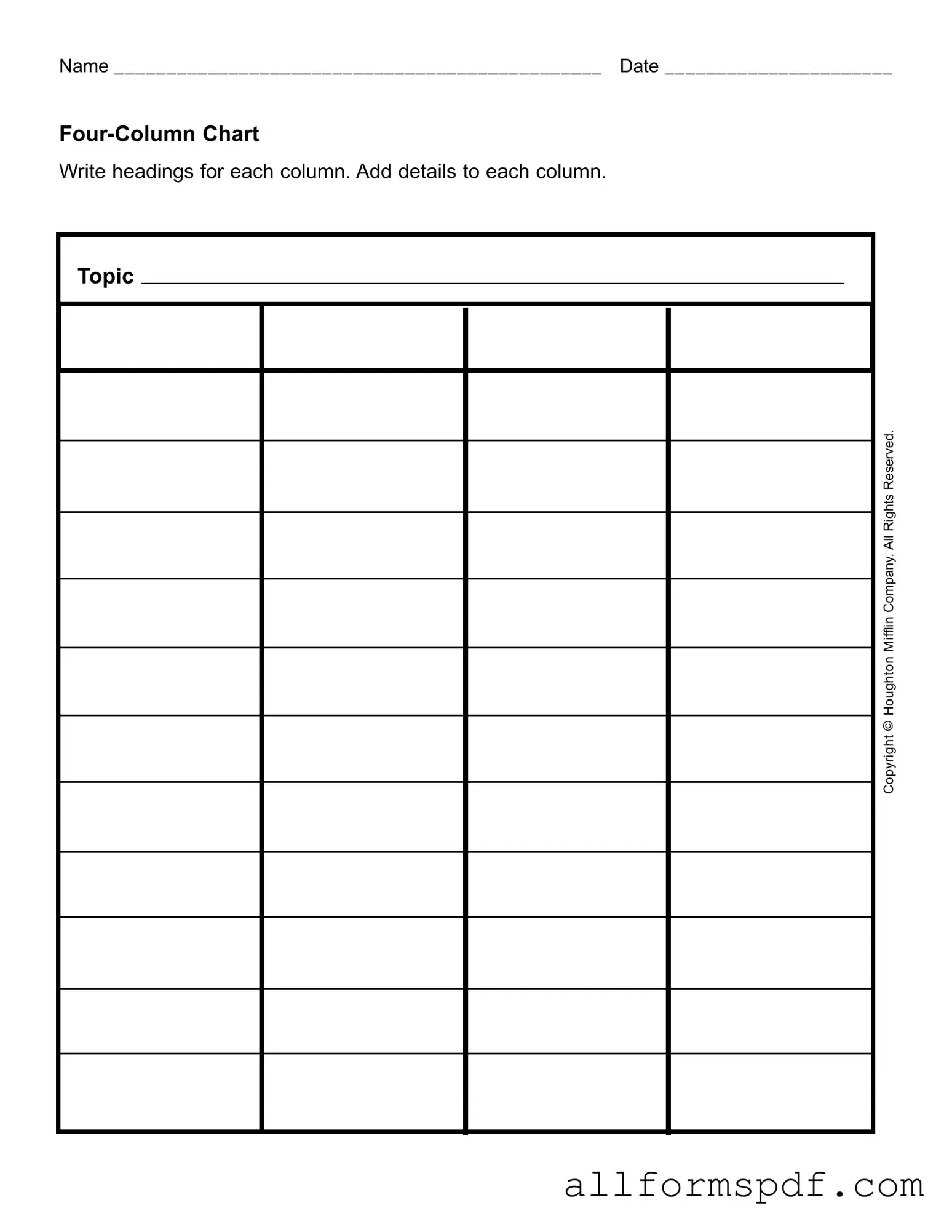Filling out the Four Column Chart form can seem straightforward, but many people make common mistakes that can lead to confusion or incomplete information. One frequent error is neglecting to provide a clear and concise topic in the designated space. Without a well-defined topic, the entire chart can lack focus, making it difficult for others to understand the purpose of the information presented.
Another mistake is failing to label each column properly. The form prompts users to write headings for each column, yet some individuals skip this step entirely or write vague titles. This can lead to misinterpretation of the data, as readers may not grasp what each column represents. Clear headings are essential for guiding the reader through the information.
Additionally, many people overlook the importance of including relevant details in each column. It's not enough to just fill in the spaces; the information should be informative and directly related to the topic. Omitting crucial details can result in a chart that lacks depth and fails to convey the intended message.
Another common oversight is poor organization of information within the columns. Some users may cram too much information into a single cell, making it hard to read. Others might scatter related information across different columns. Keeping related details together and ensuring that each entry is concise will enhance clarity.
People often forget to double-check their entries for accuracy. Typos, incorrect dates, or misspellings can undermine the professionalism of the chart. Taking a moment to review the information before submission can prevent these small mistakes from causing bigger issues later on.
Some individuals also make the mistake of not considering the audience for their chart. Tailoring the content to the needs and understanding of the intended readers can significantly improve communication. Failing to do so may result in a chart that is either too complex or too simplistic for its purpose.
Another error is not following the format guidelines provided on the form. Users may ignore specific instructions regarding spacing or layout, leading to a disorganized presentation. Adhering to the format helps ensure that the chart is visually appealing and easy to navigate.
Lastly, procrastination can lead to rushed work. When individuals fill out the form at the last minute, they may overlook important details or make careless mistakes. Setting aside ample time to complete the Four Column Chart can help ensure that the final product is polished and effective.
